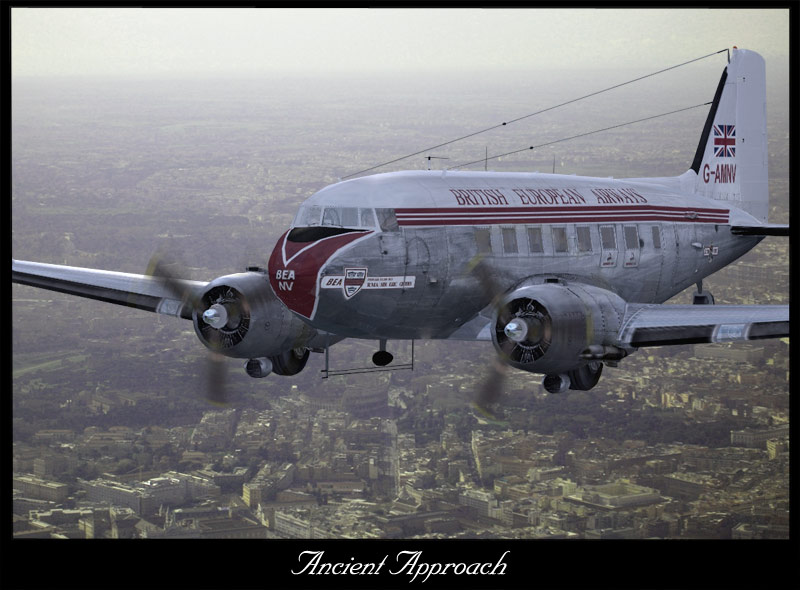
Welcome to this edition of Screenartist's Spotlight! Today, Studio V speaks to Mictheslik, a member who has a good understanding of screenshots but is also rapidly becoming a pro at editing, especially composites.
Let's hear what he has to say...
Studio V: I've noticed that you've recently become very good at editing screenshots. What inspired you to edit and do you have any hints for the "new editer"?
Mictheslik: I really wanted to see what could be done with screenshots, and as I am getting into photography combining the two seemed like a good idea. Most of my composites use my own photos taken at airshows or in flight on commercial airliners (cloudscapes and what have you), but photos can be taken anywhere, especially when you want to get that "observer from the ground" look. Of
course the internet is a good resource aswell , especially sites such as morguefile.com. My advice for anyone who wants to get into the world of editing (and I would recommend it...it's very rewarding) is to be prepared for a lot of work. Whereas slapping on a few filters and a bit of blurring may be easy, to create a good composite a long period of time has to be spent on cutting and blending to make the photo and the screenshot match in order to make it look convincing. Also try and present a piece of work nicely...If you have just spent a couple of hours working on something, why not give it a border and a title? All these things add to the aesthetics of the edit.One last thing, always work as big as possible on your edits. My screen resolution is about 1200 pixels wide...I normally work on edits that
are about 1500 pixels wide. This means you have to find a photo that's big enough for the edit you want to do. I would also recommend purchasing photoshop, whether it's the real deal or elements. I know they are expensive, but they are relatively easy to learn and produce good results.

Studio V: Obviously to edit you need a screenshot to begin with. How would you go about setting up a screenshot in Flight Sim?
Mictheslik: For composites I normally have the photo before I take the screenshot. This method means that you can work out what lighting you need to make the blending of the plane more convincing. After working out where the sun is on the photo from shadows, I normally draw a diagram of what I want to do in rough on a sheet of paper with arrows indicating the direction of the sun. Then FS2004 gets booted up and I select the aircraft I want and go to an airstrip that will get me in the mood for what I want to do ( so I can have a bit of a fly around afterwards aswell

) For example when editing a
takeoff of a commercial jet I like to go to a large airport, but for warbirds I normally go to goodwood or North Weald. I then fly about for a bit trying to get the right angles and taking lots of shots. If I feel none of them are right I slew into a position and take the shot, but I try to avoid this as some unrealistic angles can occur. Then, if I am editing a prop, I land and take a picture of the aircraft face on with its engine off. This is so i can edit the prop back on later. After I have all the images I need for my composite, I may go online and fly about for a bit or I might close FS and start work in Photoshop.
Studio V: Many members here prefer to fly / take screenshots of only one type of aircraft (e.g. General Aviation, Civil Jets etc). Do you have any preference to a certain aircrfat type when taking a shot? Do you feel certain types of aircraft can create different "atmospheres" to a shot?
Mictheslik: The type of aircraft undoubtedly creates different atmospheres to shots, which is why I like to use a variation of types as it is more interesting for me. For example large commercial jets always carry, in my opinion, a melancholy feel to them especially when they are depicted landing or taking
off, whereas warbirds and general aviation aircraft depict the freedom of the skies. I would guess this is because airliners are normally depicted around grey tarmac and buildings, whilst GA and Warbirds are presented over grass strips and rolling fields. I would say I prefer using GA, warbirds and fast jets, but I do like to spend some time doing meticulously planned airliner flights as it is quite nice to let the autopilot do all the work once in a while.

Studio V: In your opinion, what makes a good edit and/or a good screenshot?
Mictheslik: A good edit definately has to have had some thought go into it. The artist has to have gone out with an idea which has developed over time and the composition and blending must fit in well, especially in a composite. In fact the function that has to be used the most is the Dodge/Burn brush. These two modes are perfect for getting the lighting right and adding shadows on aircraft (something that FS2004 doesnt support). On the other hand, in my opinion a good unedited screenshot is normally taken in the spur of the moment, showing action or an event. For example, when taking pictures for the competition every month I normally only have about 2 or 3 to choose between.

